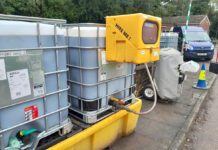The online conference “Practical Experiences of Odour Management” will be hosted by environmental consultancy Aqua Enviro on 15 June.
Odorous emissions to the environment are the main source of complaints to the Environment Agency as well as being the key cause of disputes between site owners/operators and their neighbours. Nuisance odours can be associated with a wide range of activities, including: processing, waste handling, anaerobic digestion, wastewater and sludge treatment as well as the application of solids material to land. These odours can have a substantial negative impact upon quality of life.
Odour emissions are regulated by the Environmental Permitting Regulations and managed by the EA. Its recommendations include the prevention of odour using “best available” technologies. Sometimes, sites will be required to develop and maintain Odour Management Plans. Odour-mitigation activities may include both containment and treatment but may also include monitoring, measurement and modelling.
The June event opens with a presentation from WRc, “Stakeholder management and engagement through digital means”, with other morning sessions including a report on a project for monitoring olfactory phenomena in an Italian municipality, Falconara Marittima, by Dr Cesare Rossini of LabService Analytica. Later, a group from HaskoningDHV will present on “Best available techniques for odour management & control: A technical review and a cautionary tale.
Specific equipment used in the odour management field will also come up for attention in presentations such as United Utilities’ Paul Kynaston’s exploration of the operation and performance of trickling filters. Later in the day, Oliver Mills of Swedish firm Centriair will look at the use of regenerative catalysts to treat extreme odour, VOCs and hydrogen sulphide.
There will also be sessions looking at wastewater specifically, including one from Suez Water Technologies & Solutions, on chemical solutions.







